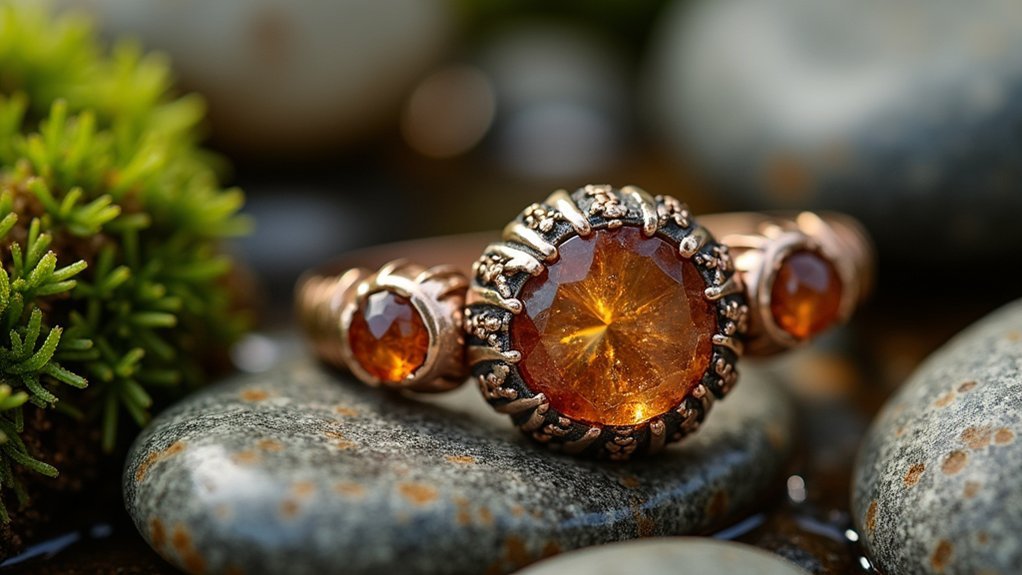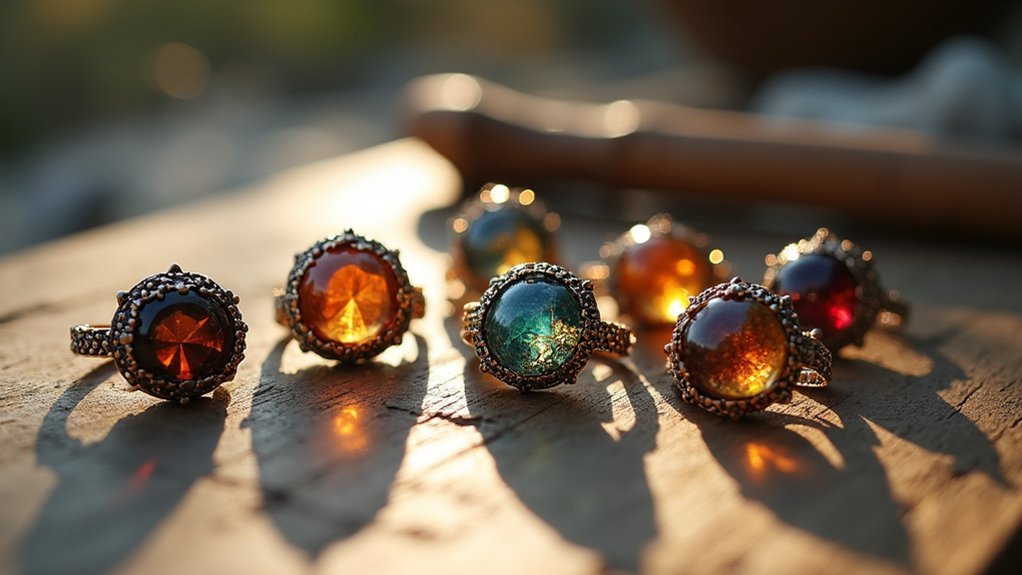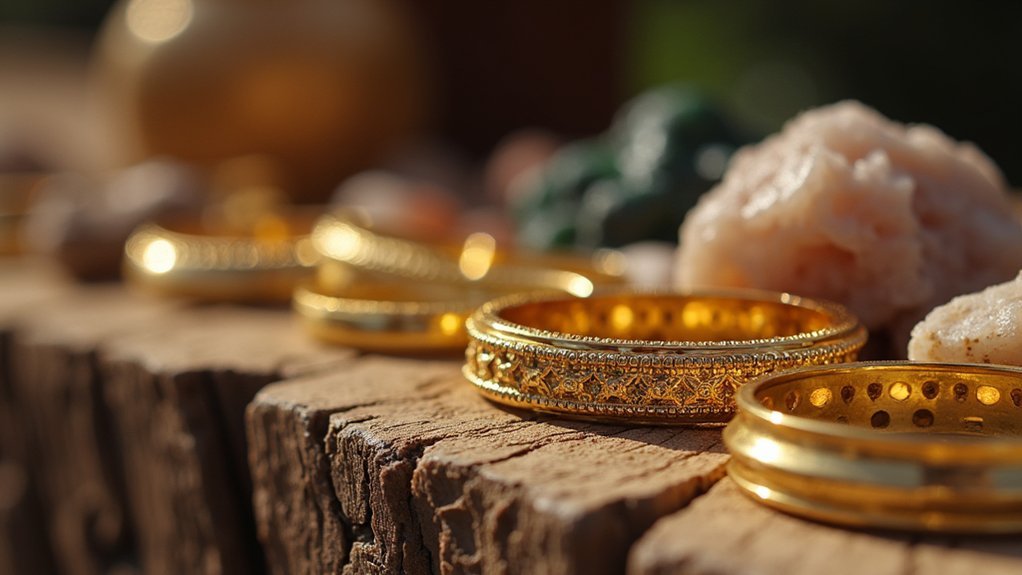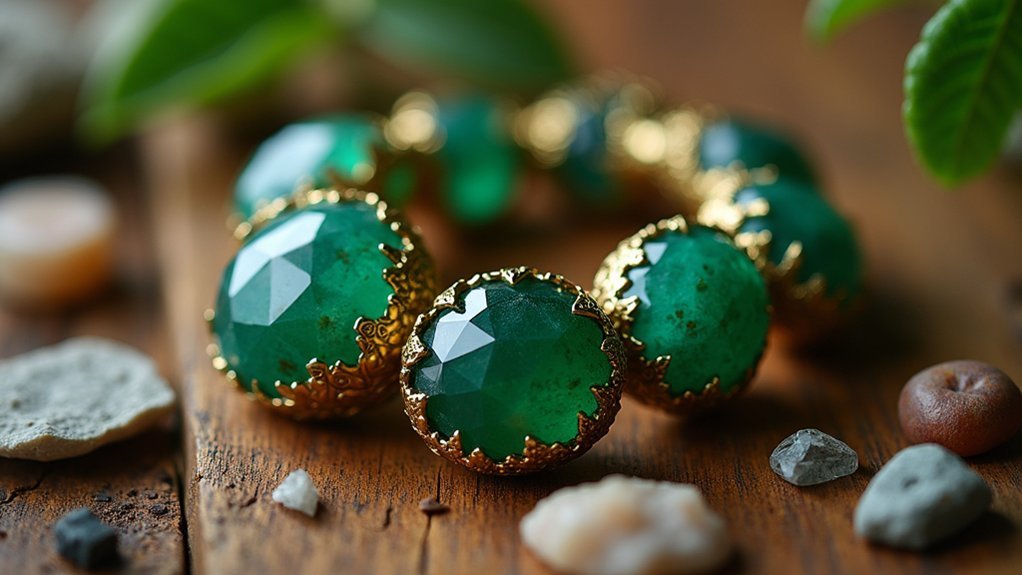You’ve probably wondered whether that beautiful ring or necklace you’re considering actually supports the people who mined its precious metals. The truth is, most jewelry comes with hidden costs—environmental damage, unsafe working conditions, and unfair wages. But ethical artisanal mining offers a different path, one that transforms how communities extract resources while protecting both workers and ecosystems. The question isn’t just about sustainability—it’s about impact.
Understanding Ethical Artisanal Mining Practices

When you choose jewelry crafted from ethically sourced materials, you’re supporting mining practices that prioritize human dignity and environmental stewardship.
Ethical artisanal mining guarantees fair labor conditions through equitable wages and safe working environments for approximately 150 million miners worldwide. These practices emphasize environmental responsibility by utilizing hand tools instead of heavy machinery, considerably reducing their ecological footprint and minimizing soil degradation.
Certification programs like Fairmined and Fair Trade guarantee adherence to strict social standards, promoting sustainable development and accountability.
Environmental Benefits of Small-Scale Mining Operations
While large-scale industrial mining devastates landscapes with heavy machinery and toxic chemicals, small-scale mining operations offer a dramatically different environmental approach.
You’ll find that ethical artisanal mining considerably reduces carbon emissions through hand tools and traditional methods, creating minimal ecological footprint compared to industrial practices.
These sustainable practices preserve community resources by operating in localized areas, avoiding extensive deforestation and land disruption.
Localized mining operations maintain environmental integrity by minimizing deforestation and preventing widespread landscape disruption within community territories.
When miners use mercury-free extraction methods, they protect local water supplies and ecosystems from contamination.
You’ll discover that supporting local economies incentivizes responsible environmental stewardship, as communities actively protect their surroundings for ongoing livelihoods.
Additionally, ethical operations often include land reclamation efforts post-extraction, restoring habitats and enhancing biodiversity for healthier local ecosystems.
Fair Labor Standards and Community Empowerment

Beyond environmental protection, ethical artisanal mining creates profound social impact through fair labor standards that transform entire communities.
When you choose sustainable jewelry from responsible artisanal mining operations, you’re supporting miners who receive up to 99% of international gold spot prices plus social premiums for community development.
Fair trade certifications guarantee safer working conditions through proper training and safety measures.
With 150 million people dependent on small-scale mining—including 25-50% women—community empowerment becomes vital for gender equality.
- Fair wages – Miners receive fair compensation that supports their families
- Community investment – Profits fund local education, healthcare, and infrastructure
- Environmental protection – Responsible practices safeguard ecosystems while improving livelihoods
Your purchasing decisions directly impact these mining communities’ long-term development.
Transparency in Supply Chain Management
As consumers increasingly demand accountability in jewelry sourcing, transparency in supply chain management has become the cornerstone of ethical artisanal mining operations.
You’ll find that true transparency allows you to trace your jewelry’s journey from mine to market, ensuring responsible sourcing without exploitation.
Fairtrade and Fairmined certifications provide robust frameworks requiring mining operations to meet strict social, economic, and environmental standards.
You can verify these credentials guarantee community benefits and sustainable practices. Companies prioritizing ethical jewelry openly disclose their supply chain processes, detailing labor conditions and environmental impact.
Blockchain technology revolutionizes artisanal mining transparency, enabling real-time material tracking.
When you choose transparent suppliers, you’re combating child labor and unsafe working conditions while supporting human rights and sustainability initiatives that align with your values.
Economic Impact on Local Communities and Miners

When you purchase sustainable artisanal mining jewelry, you’re directly supporting approximately 150 million people worldwide who depend on small-scale mining for their livelihoods.
Your ethical sourcing choices create powerful economic development opportunities in developing countries, where artisanal mining often represents the primary income source for entire families.
Small-scale mining operations retain larger profit portions compared to corporate alternatives, driving meaningful community development and poverty reduction.
Here’s how your ethical jewelry purchases make a difference:
- Fair compensation: Fairtrade standards guarantee miners receive 99% of international spot prices plus $2000 social premiums per kilogram
- Gender equality: Women comprise 25-50% of the workforce, gaining economic independence through sustainable practices
- Local communities: Direct investment stimulates regional economies and combats exploitative illegal mining operations
Your choices empower authentic community transformation.
Frequently Asked Questions
What Is Sustainable and Ethical Jewelry?
You’ll find sustainable and ethical jewelry uses recycled materials, minimizes environmental harm, guarantees fair labor practices, supports safe working conditions, and maintains transparency in sourcing through certifications like Fairtrade Gold.
How Can a Jewelry Brand Be Sustainable?
You can make your jewelry brand sustainable by sourcing ethically-obtained materials, implementing transparent supply chains, using recycled metals, adopting eco-friendly production processes, and supporting local artisan communities through fair labor practices.
How Can We Make Jewellery Sustainable?
You can make jewelry sustainable by choosing recycled metals over mined ones, sourcing ethically-traded gemstones, supporting lab-grown diamonds, and partnering with brands that prioritize environmental regeneration and circular economy practices.
What’s Sustainable Jewellery and Why Is It Gaining Popularity?
Sustainable jewelry minimizes environmental harm through recycled materials and ethical sourcing. You’re seeing its popularity rise because younger consumers prioritize transparency, environmental responsibility, and brands that align with their values.
In Summary
When you choose ethical artisanal mining jewelry, you’re supporting a sustainable system that protects both people and the planet. You’ll find that these practices create lasting positive change through fair wages, safe working conditions, and environmental protection. Your purchasing decisions directly impact mining communities, helping them build better futures while preserving their local ecosystems. You’re not just buying jewelry—you’re investing in responsible practices that’ll benefit generations to come.





Leave a Reply